Our History
Our History
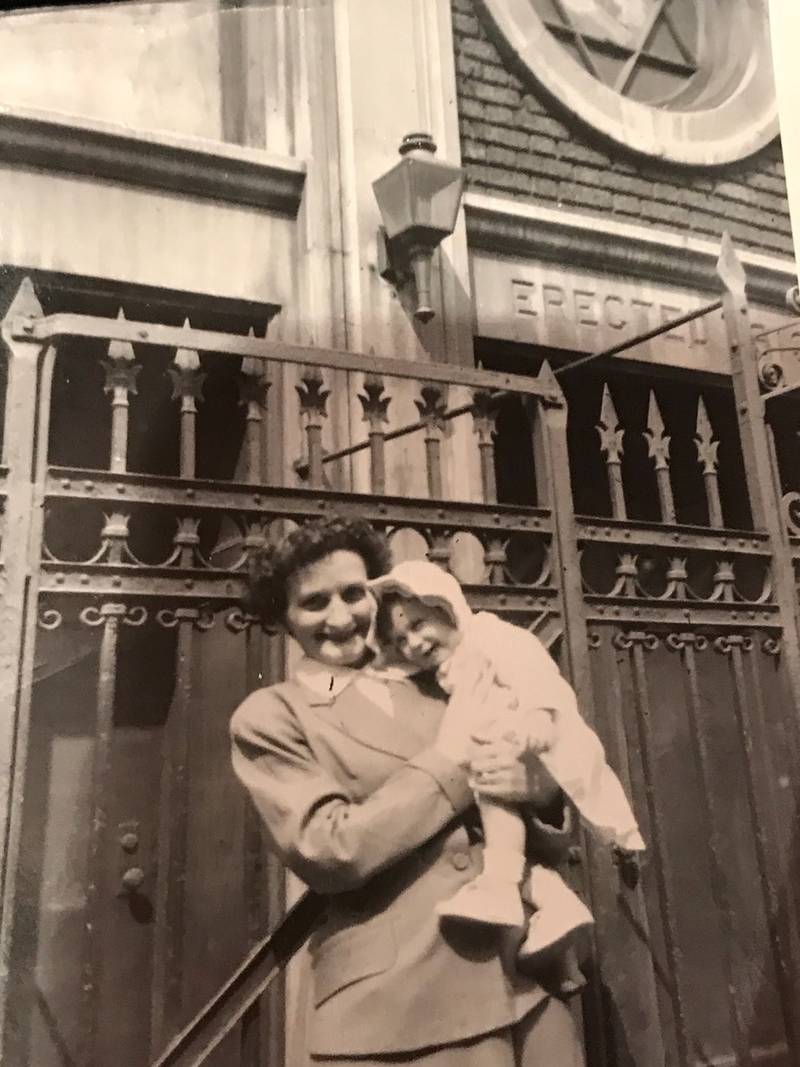 The shul that stands at 180 Stanton Street is the first American home of Congregation Bnai Jacob Anshe Brzezan (“Sons of Jacob, People of Brzezan”). Incorporated in 1893, the community of Jewish immigrants from the town of Brzezan in Southeast Galicia, (formerly Austria-Hungary, then Poland, now the Ukraine), created their place of worship from an existing structure on the site in 1913, within a thriving Lower East Side Jewish community. The shul has since changed with the neighborhood, but has struggled to preserve its old country roots. Today, it is one of the few tenement shuls still left of the 700 congregations recorded in 1918 serving the Jews of the Lower East Side.
The shul that stands at 180 Stanton Street is the first American home of Congregation Bnai Jacob Anshe Brzezan (“Sons of Jacob, People of Brzezan”). Incorporated in 1893, the community of Jewish immigrants from the town of Brzezan in Southeast Galicia, (formerly Austria-Hungary, then Poland, now the Ukraine), created their place of worship from an existing structure on the site in 1913, within a thriving Lower East Side Jewish community. The shul has since changed with the neighborhood, but has struggled to preserve its old country roots. Today, it is one of the few tenement shuls still left of the 700 congregations recorded in 1918 serving the Jews of the Lower East Side.
The building is typical of the tenement synagogues that once dotted the Lower East Side at the time it was built. The stone and brick structure is wedged into a tiny, narrow lot—only twenty feet wide and roughly 100 feet long. A three-story building, the synagogue houses the beis midrash (house of study) in the basement, where members daven during the week in daily prayer. It includes a raised reader’s platform, and a built-in ark for the torah scrolls at the north end. Rising above the room on either side are galleries for the women’s section, and a pressed-metal ceiling with two octagonal skylight domes. A series of 12 wall paintings of the months, with zodiac signs – said to be unique to the Lower East Side – date back at least to 1939.
In 1952, Anshei Brzezan merged with the joint congregation Bnai Joseph Dugel Macheneh Ephraim which represented two other towns from Poland, Rymanow and Bluzhower, a common practice at a time when the Jewish LES was shrinking so rapidly. Many of the shuls were also being displaced by the urban renewal projects taking place in lower Manhattan in the late 50s. The Stanton Street Shul, located in a Latino part of the Lower East Side, was one of only a few that survived.
The Stanton Street Synagogue survives today as a distinctive architectural, cultural and religious landmark of the Yiddish-speaking Eastern European Jewish community of New York City’s Lower East Side, the most famous immigrant district in a city renowned for its immigrant history. The Shul’s unique mix embraces continuity between the older population of immigrants and long-time Lower East Side residents on the one hand, and younger singles and couples just starting families on the other. The survival of this small shul (one of approximately a dozen functioning synagogues in the neighborhood today) is not only a testament to the perseverance of its elderly, immigrant members, for whom it is a true home and living memorial to otherwise forgotten towns. It is also a symbol of the renewal of the Lower East Side as a neighborhood where younger Jews with their own traditions are now moving in and forming connections, reweaving the chain of generations so nearly unraveled in the turmoil of the twentieth century.
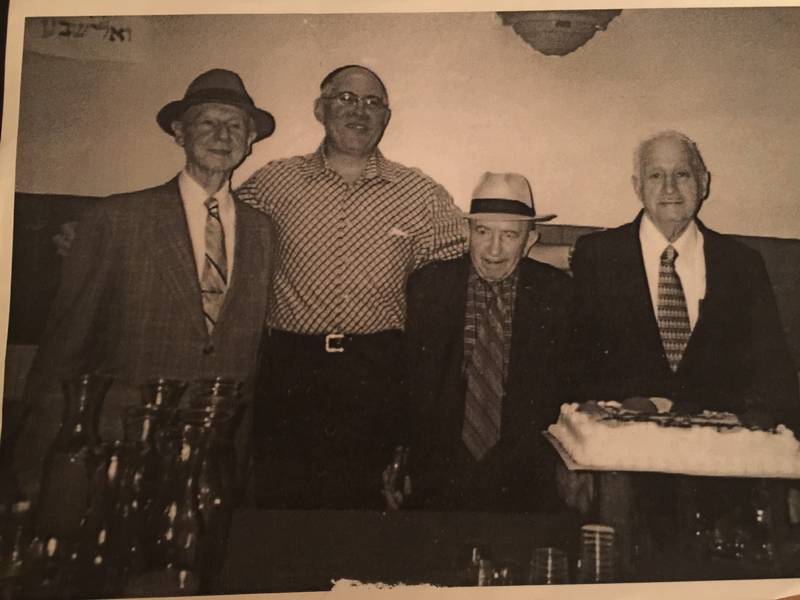
For more historical photos of the life of our shul, click here.
For the progress of our renovation of the shul, click here.
The Stanton Street Shul Archive
Rabbi Yosele Singer turned over almost all Shul records to the YIVO Institute in the 1980s when YIVO was running its landsmanshaft project. He turned them over as records from Brzezan (Berezhany, Ukraine, Inter-War Poland, Austria Hungary). The original congregation and its rabbi, Rabbi Rose, came from that town.
The earliest records are in German since the town of Brzezan was located in Austria- Hungary at that time. The records after that are uneven but often include names, addresses, and payment amounts (dues and donations). They are a mix of Yiddish and English.
The following are some documents found at the shul or in the possession of one of our members.
1960 $5 Membership receipt for Congregation Bnei Jacob Anshei Brzezan
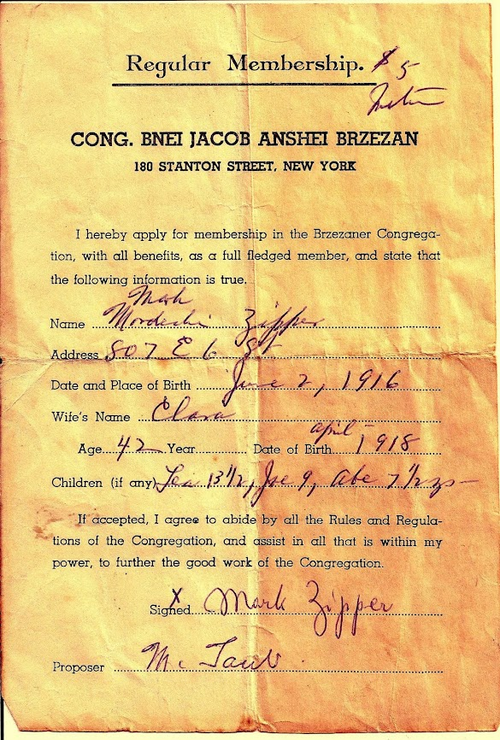
1965 $1.75 monthly dues receipt on a general meeting notice for Congregation Bnei Joseph D. M. E (Dugel Machne Ephraim). The crossed-out old address shows that this membership meeting is now being held at their new building where they merged with Congregation Bnei Jacob Anshei Brezan at 180 Stanton Street New York after moving from 289 E. 3rd Street.
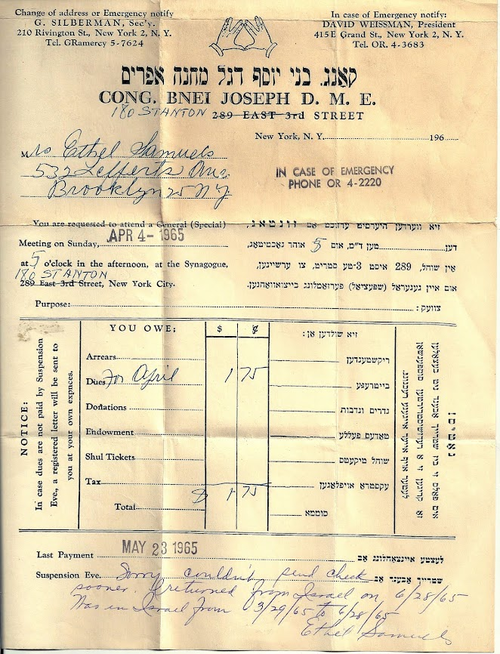
Of historical interest: Congregation Bnei Joseph D. M. E (Dugel Machne Ephraim). 129 Columbia Street. Chevre Kadisha rules, 1955
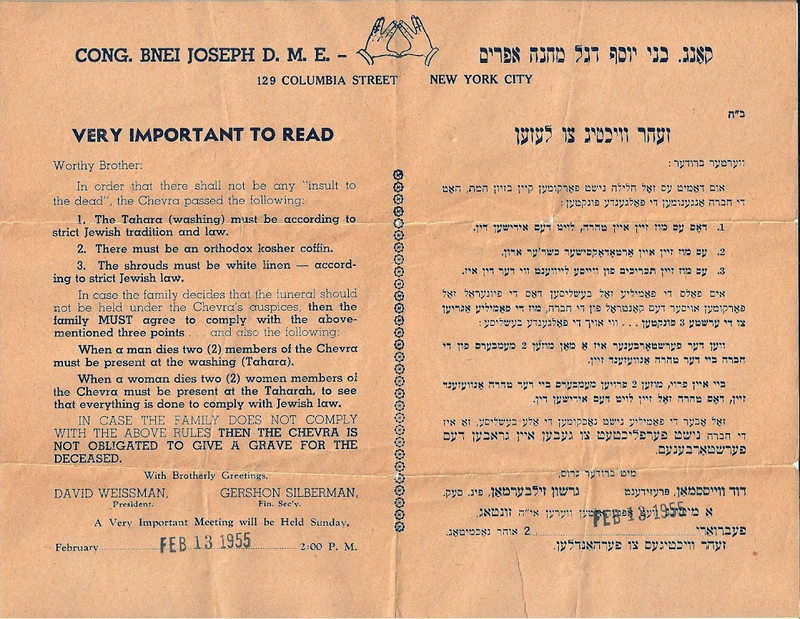
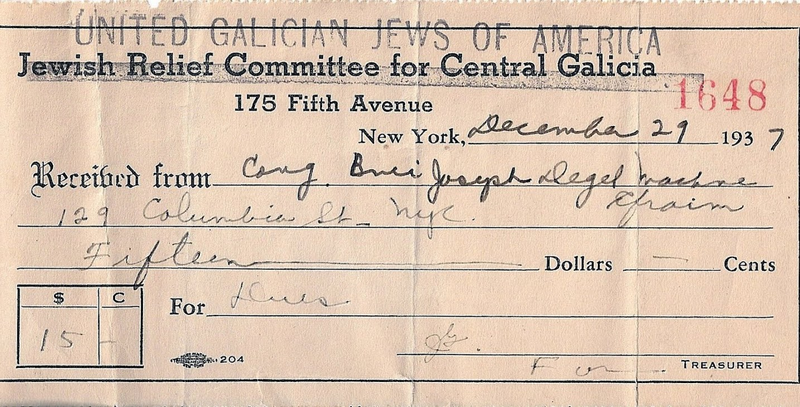
E.g., Cedar Grove Cemetery Queens NY deed for Chevra Bnei Joseph Anshe Rymanow, June 5, 1908, then assigned from Congregation Bnei Joseph Anshe Rymanow to Congregation Bnei Joseph Degel Machne Ephraim, January 7, 1932
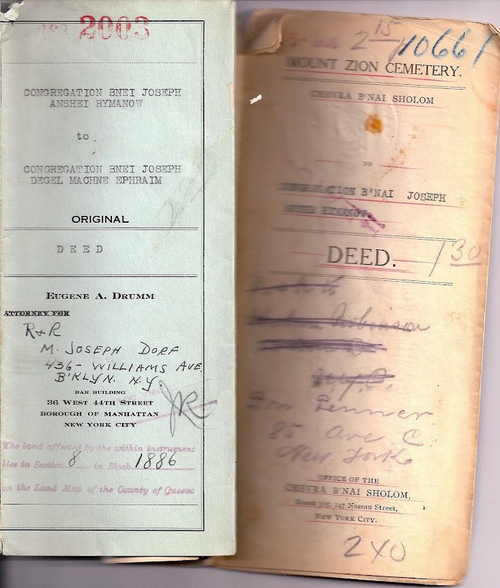
Sat, November 22 2025
2 Kislev 5786
Today's Calendar
| Shacharit : 9:30am |
| Kiddush : 12:00pm |
| Mincha immediately following kiddush : 12:30pm |
| Havdalah : 5:17pm |
This week's Torah portion is Parshat Toldot
| Shabbat, Nov 22 |
Candle Lighting
| Shabbat, Nov 22, 4:15pm |
Havdalah
| Motzei Shabbat, Nov 22, 5:17pm |
Shabbat Mevarchim
| Shabbat, Dec 13 |
ZOOM Archive
Click HERE to go to our YouTube Channel to view or review any of our ZOOM classes, including our current series on Israeli Military History, taught by David Deutsch.
StantonKIDS
RESOURCE HUB
Follow on Social Media
Daily Zmanim
| Alot Hashachar | 5:25am |
| Earliest Tallit | 5:57am |
| Netz (Sunrise) | 6:51am |
| Latest Shema | 9:16am |
| Zman Tefillah | 10:05am |
| Chatzot (Midday) | 11:42am |
| Mincha Gedola | 12:06pm |
| Mincha Ketana | 2:32pm |
| Plag HaMincha | 3:32pm |
| Shkiah (Sunset) | 4:33pm |
| Havdalah | 5:17pm |
| Tzeit Hakochavim | 5:17pm |
| More >> | |
180 Stanton Street, New York, NY 10002
Mailing Address: P.O. Box 1008, New York, NY 10002
Privacy Settings | Privacy Policy | Member Terms
©2025 All rights reserved. Find out more about ShulCloud




